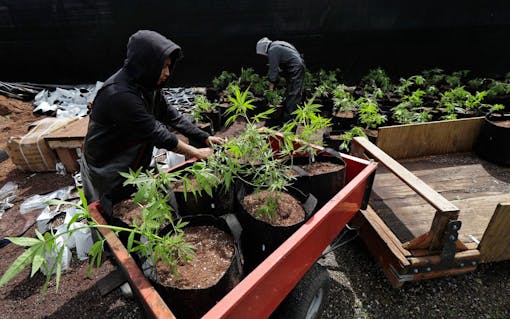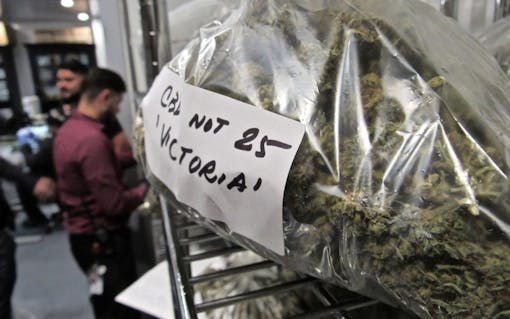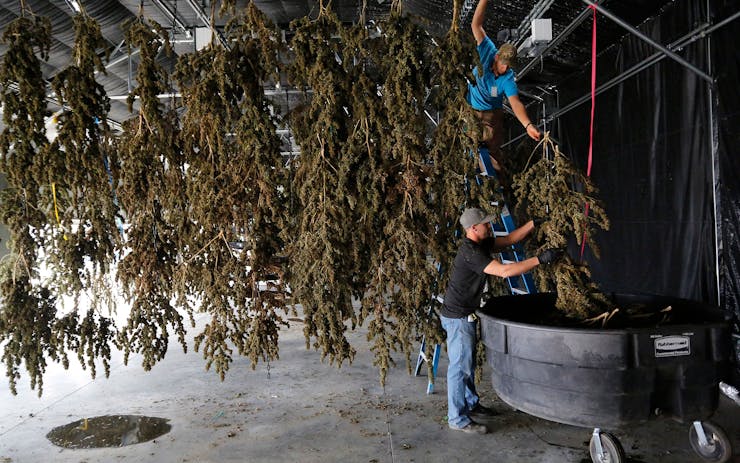Wholesale cannabis prices could hit as low as $30 an ounce in some parts of the country by Christmas as another record crop of outdoor cannabis floods markets and sinks prices.
For example, the legal recreational market in Oregon continues to drown in a multi-year surplus. Oregon produced 10 times the cannabis it needs each year, and approximately 825,000 pounds of unsold dried wholesale flower now sits in the state’s tracking system, says Jonathan Rubin, CEO of Cannabis Benchmarks, which tracks wholesale prices.
“Prices are the lowest we have tracked and now we have the fall harvest coming in,” Rubin said. “Over the coming months, we anticipate for prices to decline with outdoor, sun-grown flowers.”Bargain Hunting? Nevada’s wholesale prices are the most expensive at $4 per gram, followed by California at $2.43, Colorado at $1.93 and Oregon at just $1.33 per gram wholesale.
But has the bottom really fallen out, or is it just all part of an annual cycle in outdoor cannabis being magnified by legalization?
“There is a silver lining for the business. And a huge silver lining for the consumer.”
“Every fall we see a new low as the outdoor crop comes in. That flattens out in the first half of the year,” said Tom Adams, managing director of industry intelligence at BDS, which tracks consumer retail prices.
Cannabis’s price now moves like other commoditized agricultural products, for which boom and bust cycles are normal. As prices go up, the market attracts more growers. As the growing field gets crowded, some exit.
The question is: How long will prices stay low?
Bargain Hunting? Compare Local Menus on Leafly Finder
“Prices are continuing to go lower, and for the remainder of the year, we see prices declining,” Rubin said. “Simply put, all these markets are already in a surplus situation and the outdoor harvest is only going to add to the glut.”
But it’s more complicated than that, said Jeannette Horton, head of global marketing and communications for MJ Freeway. A high-end market for craft cannabis is developing, too.
“While there have been a lot of reports of falling prices, that is not the only story. Retail data shows us that while not the majority, there are premium and craft cannabis growers whose products sell for $10–$15 a gram—even in saturated markets like Oregon and Colorado. The trends point to what many people expected: a segmentation of the flower market into commodity products and, importantly, premium craft products that consumers will pay top dollar for at retail.”
Shop highly rated dispensaries near you
Showing you dispensaries nearIllicit Market’s ‘Risk Premium’ Drained Away

In this April 12, 2018, photo, Alex Martin, left, and Macrio Ahlon, right, load transplanted marijuana plants into a trailer as they work at the Hollingsworth Cannabis Company near Shelton, WA. Hollingsworth family members own a marijuana farm south of Seattle, where they grow about 9,000 plants and employ 30 people at peak harvesting. (Ted S. Warren/AP)
Most of the illegal market cost of cannabis is risk, according to researchers at RAND. Prices peaked in the ’90s and 2000s with high demand and high prohibition. With prohibition receding, so are prices.
Oregon legalized in 2014, and cannabis retail flowers prices are down 36% over the past two and a half years. Similar trends have taken hold in Colorado and Washington, according to Adams.
“The illegal premium is disappearing,” he said. “This was a product that was priced based on the fact that you could go to jail for growing and distributing it. When you strip away the legal situation, it’s just a plant-based raw product when it’s just flower.”
Harvest season oversupply has challenged legal states in recent years. In 2015, Washington saw Seattle’s market—which was being served by indoor grows—suddenly flooded as the outdoor crops east of the Cascades arrived late in the year. Prices collapsed.
“Legalization promotes transparency,” Rubin said. “Legalization promotes production at scale with the efficiencies those scales bring.”
Sometimes efficiency and scale lead to oversupply, but they also promote taxes. In California, high taxes have actually raised the retail price of cannabis—up from $9.66 per gram in March 2017 to $9.82 in May 2018.
“California is about twice the taxes and regulations of anybody else,” Adams said.
Future of Cannabis’ Price

(David Downs for Leafly)
In general, prices will likely continue to fall as industrialization and consolidation drive production costs down in maturing markets. High taxes and fees will make margins super narrow, pushing further cost reductions at the farm.
Rubin predicts that most American farmers and agribusinesses will eventually consider working cannabis and hemp into their total portfolio to create a new revenue stream.
“Ten years out, it seems reasonable to me that virtually all farmers will be including marijuana in their crop rotations,” Rubin said. “I know farmers in Nebraska who are dying to grow hemp. They are losing money on acres of soybeans.”
Cannabis flower could also one day be priced like ketchup packets—the per-unit cost is miniscule at full industrial scale. Free joints for new customers could become even more common, where regulations allow.
“There will be more promotional giveaways,” Adams said. “Ultimately, the decrease in cost of a pound of flower is a good thing for the industry—not just for consumers.”
For the industry, price is driving a shift from flowers to more processed and value-added cannabis extracts and edibles. Prices for manufactured cannabis products have gone up in Oregon and Colorado despite falling flower prices.
US consumer spending on concentrates alone is projected to grow by 49% and reach $2.9 billion in 2018, based on a recent industry report. By 2022, US concentrate sales are estimated to hit $8.4 billion, nearly matching the $8.5 billion in flower sales forecasted for that year.
“Flower is missing the branding in general,” Adams said. “People are willing to pay more for a branded product. They are also willing to pay more for a technology-enhanced product.”
So with the cost of the raw flower going down, and the price of the finished products such as concentrates and edibles going up, margins have a chance of increasing.
“There is a silver lining for the business,” Adams said. “And a huge silver lining for the consumer.”






